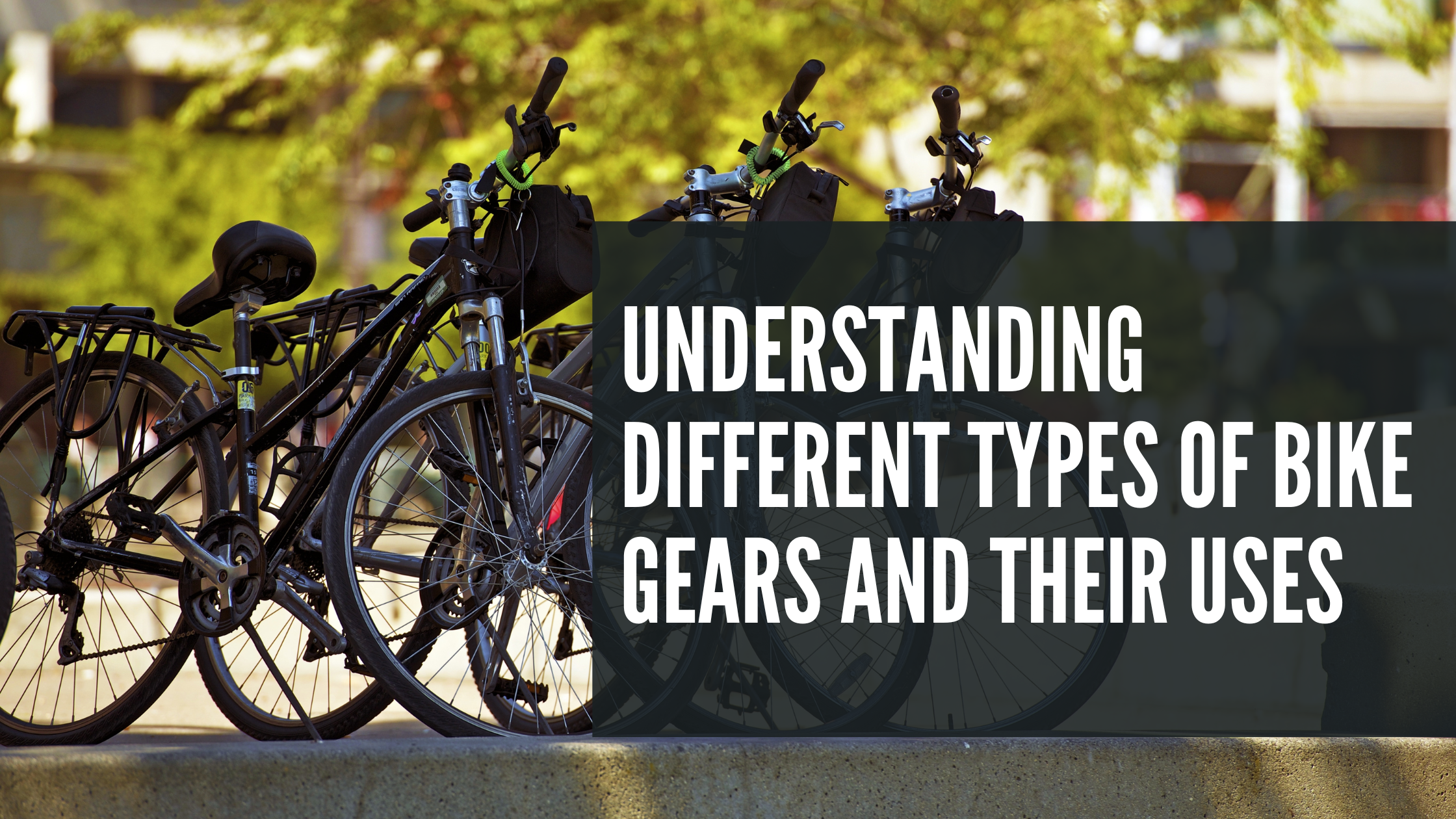Bike gears are like the secret sauce that can transform your cycling experience. Whether you're cruising on flat roads, climbing steep hills, or speeding down trails, knowing how to use your gears can make all the difference. Let’s dive into the world of bike gears and see how to use them to your advantage.
Why Bike Gears Matter
Gears allow you to adjust the difficulty of pedaling to match the terrain. They help you maintain a comfortable and efficient pedaling rhythm (cadence) regardless of whether you're going uphill, downhill, or on flat ground.
Key Points:
- Efficiency: Helps you pedal at a steady pace.
- Comfort: Reduces strain on your legs.
- Performance: Enhances your speed and control.
Types of Bike Gears
1. Single-Speed Gears Single-speed bikes have only one gear ratio. They are simple, lightweight, and require minimal maintenance, making them ideal for flat terrains and city commuting.
Key Points:
- Advantages: Simple, low maintenance.
- Disadvantages: Not suitable for hilly terrains.
Uses: Best for city commuting, leisure riding on flat surfaces.
2. Fixed Gear (Fixie) Fixed-gear bikes, or fixies, have a single gear but no freewheel mechanism. This means you must pedal continuously to move, and you can slow down by resisting the pedal motion.
Key Points:
- Advantages: Lightweight, good for building strength and control.
- Disadvantages: Requires constant pedaling, not beginner-friendly.
Uses: Urban commuting, training, track cycling.
3. Hub Gears Hub gears are enclosed within the rear wheel hub, offering a range of gears without exposed components. They are durable and require less maintenance than derailleur systems.
Key Points:
- Advantages: Low maintenance, reliable in all weather conditions.
- Disadvantages: Heavier, limited gear range.
Uses: Commuting, touring, leisure riding.
4. Derailleur Gears Derailleur systems are the most common, found on road, mountain, and hybrid bikes. They use a series of gears (cassettes) on the rear wheel and chainrings on the front, moved by derailleurs.
Key Points:
- Advantages: Wide range of gears, efficient.
- Disadvantages: Requires regular maintenance and adjustment.
Uses: Road cycling, mountain biking, long-distance touring.
5. Internal Gear Hubs These systems are enclosed in the hub and can offer a wide range of gears (3, 5, 7, 8, or even 14 speeds). They are protected from the elements, making them durable and low-maintenance.
Key Points:
- Advantages: Protected from dirt and weather, low maintenance.
- Disadvantages: Heavier and more expensive than derailleur systems.
Uses: Commuting, trekking, urban cycling.
How to Choose the Right Gears for Your Needs
1. Road Cycling For road bikes, a derailleur system with a wide range of gears is ideal. It allows for efficient riding on varied terrains, including hills and flat roads.
Key Points:
- Compact Crankset: Suitable for climbing.
- Standard Crankset: Offers higher top-end speed.
2. Mountain Biking Mountain bikes require a gearing system that can handle steep climbs and rough terrain. A wide-range derailleur system or a 1x (single chainring) setup is popular for simplicity and reliability.
Key Points:
- 1x Systems: Simplifies shifting and reduces weight.
- 2x or 3x Systems: Offers more gear options for varied terrain.
3. Commuting For commuting, hub gears are an excellent choice due to their durability and low maintenance. A bike with a 7-speed or 8-speed internal hub gear can handle city streets and moderate hills.
Key Points:
- Internal Gears: Require less maintenance and are more reliable in bad weather.
- Single-Speed: Great for flat cities and low maintenance.
4. Touring Touring bikes benefit from a wide range of gears to manage the additional weight of luggage and varying terrains. A 3x derailleur system offers the versatility needed for long-distance travel.
Key Points:
- Triple Crankset: Provides a wide range of low gears for climbing with heavy loads.
- Robust Components: Ensure reliability over long distances.
Master Your Ride
Understanding bike gears and how to use them effectively can significantly enhance your cycling experience. Whether you're a commuter, a mountain biker, or a road cyclist, choosing the right gear system tailored to your needs can make every ride smoother and more enjoyable. So gear up, adjust accordingly, and enjoy the ride!



Share:
Cycling Events and Races: How to Get Involved
How to Assemble Your New Bike: A Comprehensive Step-by-Step Guide